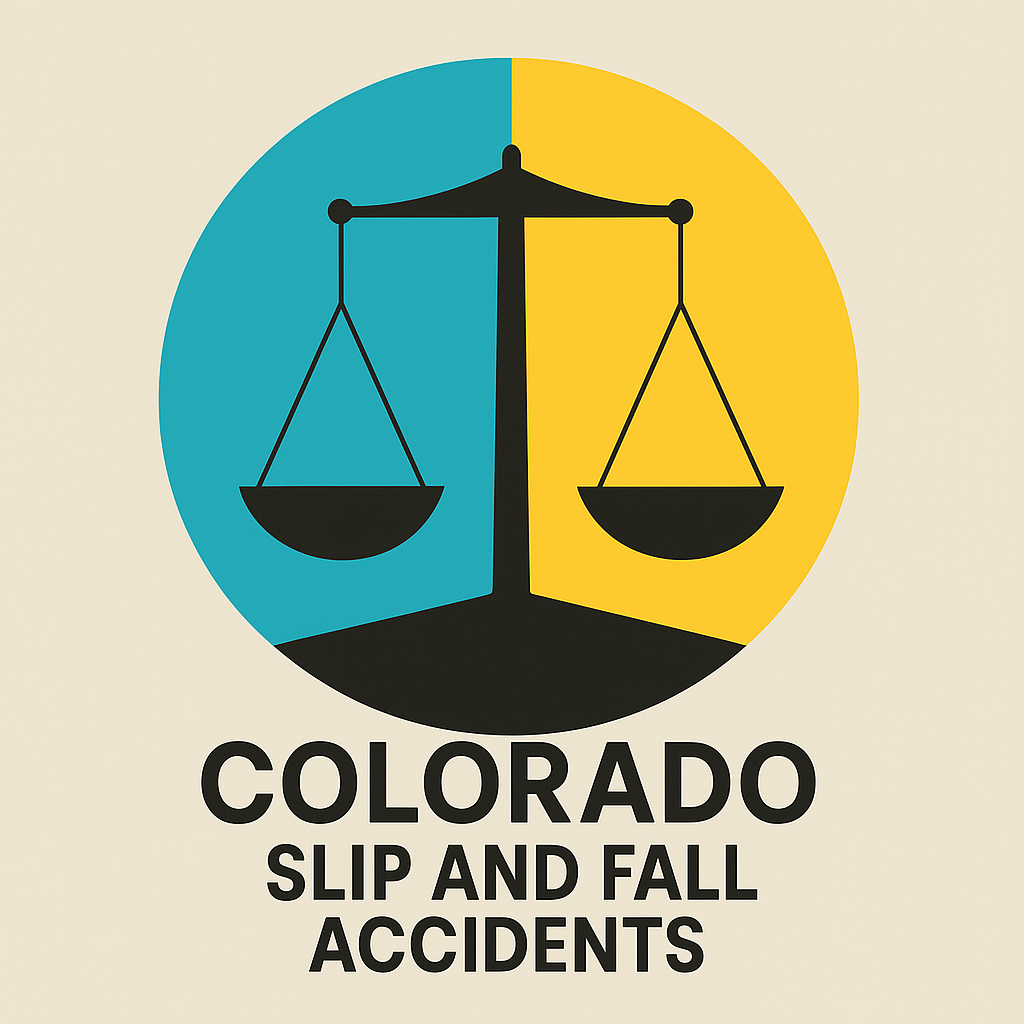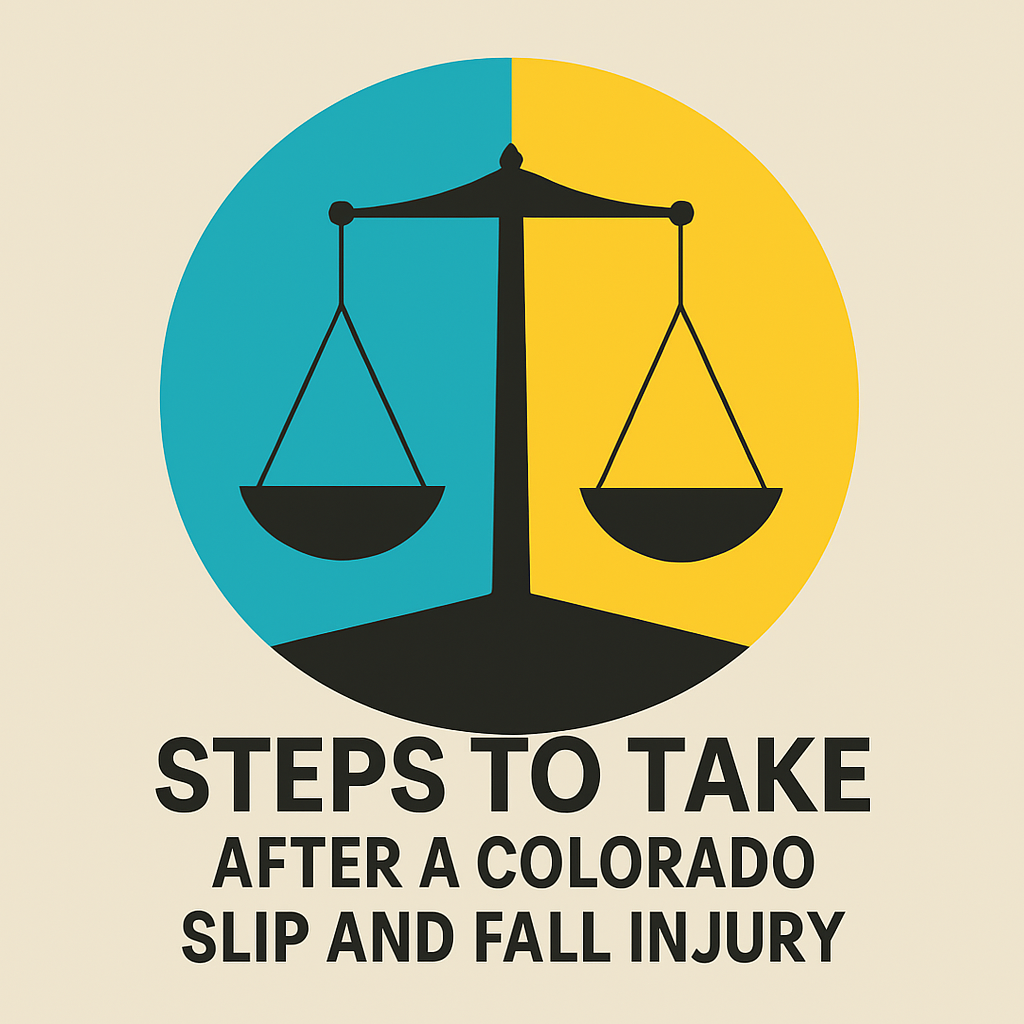A slip and fall accident can happen to anyone, anywhere. In Colorado, snowy sidewalks, wet floors, and uneven surfaces are just some of the hazards that might cause a serious fall. When property owners fail to keep their places safe, you may have the right to seek money for your injuries and other losses.
This guide explains important Colorado laws and outlines steps to follow after a slip and fall accident. Knowing these steps can help protect your health, finances, and legal rights.

Common Reasons for Colorado Slip and Falls
Some common reasons for slips and falls in Colorado include:
Snow and Ice
Colorado winters often bring slippery conditions. Owners must clear walkways and parking lots within a reasonable time.
Wet or Slippery Floors
Stores and restaurants should clean up spills promptly or post warning signs.
Uneven Pavement or Cracked Sidewalks
Unrepaired walkways can lead to tripping and serious injury.
Obstructed Walkways
Debris or items left on the floor can cause people to stumble.
Poor Lighting
Dark stairwells or parking areas make it hard to see hazards.
Loose Carpeting or Flooring
Torn rugs or lifted tiles create unsafe conditions.
Important Colorado Slip and Fall Laws and Court Cases
Colorado has specific statutes and important court decisions that explain when property owners or employers may be held responsible for accidents, including slip and fall injuries.
Below is an overview of key laws and court rulings that might affect your claim.
Premises Liability in Colorado
Colorado’s premises liability law (under C.R.S. § 13-21-115) requires property owners to keep their land safe for visitors. When an owner knows (or should know) about a hazardous condition (such as a wet floor or a broken step) and does not fix it or warn people, that owner can be held responsible for injuries that happen on the property.
Notice Requirements
Several Colorado statutes outline notice requirements, especially when an injury involves a workplace or a public entity:
- C.R.S. § 8-43-102: If you are injured at work, you generally must tell your employer in writing within 10 days, or you risk losing certain benefits.
- C.R.S. § 8-43-103: Employers have to report serious on-the-job injuries to the state, including those causing you to miss work or suffer severe harm.
- C.R.S. § 24-10-109: If a public entity (like a city, county, or state agency) is involved, you normally must file a written notice of your claim within 182 days. If you miss this deadline, you cannot sue later.
Important Colorado Slip and Fall Cases
The courts have decided a number of cases that clarify when and how property owners can be held liable for slip and fall accidents:
- Galef v. Univ. of Colo., 2022 COA 91: A slippery staircase in a public building was considered an “unreasonable risk,” so the university could not avoid responsibility under the Colorado Governmental Immunity Act.
- Safeway Stores, Inc. v. Smith, 658 P.2d 255: If a store’s way of operating (like selling certain foods) makes it likely that debris will fall on the floor, the injured person does not always have to show the store knew about the specific hazard.
- Jules v. Embassy Properties, Inc., 905 P.2d 13: A property owner must prevent known dangers. In this case, the court found enough evidence that the owner had not taken proper care.
- Jasko v. F. W. Woolworth Co., 177 Colo. 418: When a business’s setup (like serving food on the go) makes falls likely, the owner should expect spills and take extra care.
- Harris v. Regional Transp. Dist., 15 P.3d 782: A claim against a public transit agency could proceed because the court found the agency was not automatically protected by governmental immunity under the circumstances.
These laws and cases can guide you if you slip and fall on someone else’s property, whether it’s a private store or a public building. Always check deadlines, follow notice rules, and gather strong evidence to support your claim.
Additional Rules
- Workers’ Compensation (7 CCR 1101-3): Employers must report injuries and decide whether they accept or contest liability within specific time frames.
- Safety & Risk Management (3 CCR 702-5): Insurance companies must provide services to help employers reduce hazards.
- Assisted Living Residences (6 CCR 1011-1 7.00): These facilities must have fall management programs and train staff to assist residents who fall.
Steps to Take After a Colorado Slip and Fall Injury

1. Stay Calm and Assess Your Injuries
Check if you can move safely. Some injuries, like broken bones or head trauma, may not show right away.
2. Take Photos of the Scene
If possible, use your phone to capture the hazard (snow, liquid, loose rug) and the general area.
3. Gather Witness Information
Ask anyone who saw your fall for their name and contact details. Their statements might help later.
4. Report the Fall
Notify the property owner, manager, or person in charge. If you’re at work, remember the 10-day rule under C.R.S. § 8-43-102.
5. Seek Medical Attention Immediately
Even if you feel fine, see a doctor. Some injuries (like concussions) appear hours or days later.
6. Follow Doctor’s Orders
Keep up with treatment plans, prescriptions, and follow-ups. Gaps in care can hurt your claim.
7. Keep All Medical Records and Bills
Save receipts, test results, and doctor notes. These help show the extent and cost of your injuries.
8. Preserve Physical Evidence
Hold on to any damaged clothing, footwear, or items from the slip and fall accident scene.
9. Be Careful Talking to Insurance Adjusters
Insurance companies often try to pay as little as possible. Consider talking to an attorney before giving any statements.
10. Get a Copy of Any Incident Report
If the property owner or manager made a written record of your slip and fall accident, ask for a copy.
11. Identify the Property Owner’s Insurance
Find out which insurance covers the property. This is important for filing a claim.
12. Limit Social Media Posts
Insurance companies might check your online profiles. Avoid discussing the slip and fall accident or injuries publicly.
13. Consult a Legal Professional
An experienced attorney can gather evidence (such as maintenance logs or security footage) and help prove the property owner’s negligence.
14. Keep a Journal of Pain and Limitations
Write down how you feel each day, including pain levels and any daily tasks you struggle to do.
15. Be Prepared for Possible Litigation
Many slip and fall cases settle out of court, but if negotiations fail, you may need to file a lawsuit. An attorney can represent you if the insurance company refuses to pay fairly.
Frequently Asked Questions About Colorado Slip and Fall Claims
Colorado slip and fall accidents can leave you facing medical bills, lost income, and a lot of uncertainty about your legal rights.
If you’re not sure whether you need a lawyer, how much time you have to file a lawsuit, or which laws apply to your situation, these common questions and answers can help.
Do I Have to Hire a Colorado Slip and Fall Attorney to File a Claim?
No, but a lawyer can greatly improve your chances of receiving fair compensation. Legal procedures and negotiations are often complex.
How Long Do I Have to File a Slip and Fall Lawsuit in Colorado?
In most slip and fall cases, you have two years from the date of the accident. If it happened at work or involved a public entity, special timelines apply. (See C.R.S. § 24-10-109 and C.R.S. § 8-43-102.)
What if I Didn’t See a Doctor Right Away?
You can still file a claim. Some injuries show up later. It’s best to see a doctor as soon as you can to protect both your health and your case.
Find Out More About Your Legal Options on Ask Law Easy
By following these steps and understanding Colorado’s slip and fall laws, you will be in a stronger position to seek help and fair compensation. If you need more information about your legal options, Ask Law Easy has many free articles explaining your rights. Check out our website to learn more.